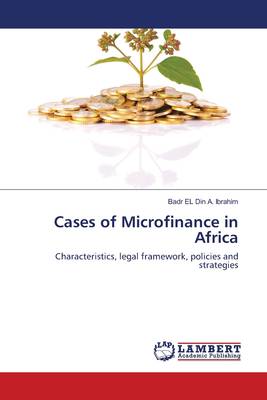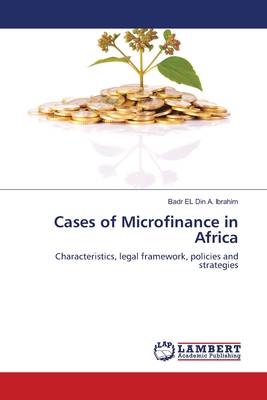
- Afhalen na 1 uur in een winkel met voorraad
- Gratis thuislevering in België vanaf € 30
- Ruim aanbod met 7 miljoen producten
- Afhalen na 1 uur in een winkel met voorraad
- Gratis thuislevering in België vanaf € 30
- Ruim aanbod met 7 miljoen producten
Zoeken
Cases of Microfinance in Africa
Characteristics, legal framework, policies and strategies
Badr El Din a Ibrahim
Paperback | Engels
€ 55,45
+ 110 punten
Omschrijving
The objectives of the book are twofold: to document and compare the different microfinance approaches (interest-free versus conventional microfinance respectively), and to show how these two approaches can learn from each other. In addition, the book demonstrates the prospects for interest-free microfinance branches or windows in Muslim minority countries in Africa such as Ethiopia, without the need for new interest-free microfinance policies and regulatory frameworks. In this book the author surveys the prominent characteristics, policies, regulatory frameworks, strategies and wholesale markets, as well as the role of microfinance as a poverty reduction tool, in the two distinct African approaches of Sudan and Ethiopia. This book is mainly intended for microfinance providers, practitioners, regulators and policy makers, NGOs and donors, financial inclusion researchers, students of development finance, and microfinance experts and consultants in Africa and elsewhere.
Specificaties
Betrokkenen
- Auteur(s):
- Uitgeverij:
Inhoud
- Aantal bladzijden:
- 148
- Taal:
- Engels
Eigenschappen
- Productcode (EAN):
- 9783330321625
- Verschijningsdatum:
- 5/06/2017
- Uitvoering:
- Paperback
- Formaat:
- Trade paperback (VS)
- Afmetingen:
- 152 mm x 229 mm
- Gewicht:
- 226 g

Alleen bij Standaard Boekhandel
+ 110 punten op je klantenkaart van Standaard Boekhandel
Beoordelingen
We publiceren alleen reviews die voldoen aan de voorwaarden voor reviews. Bekijk onze voorwaarden voor reviews.











